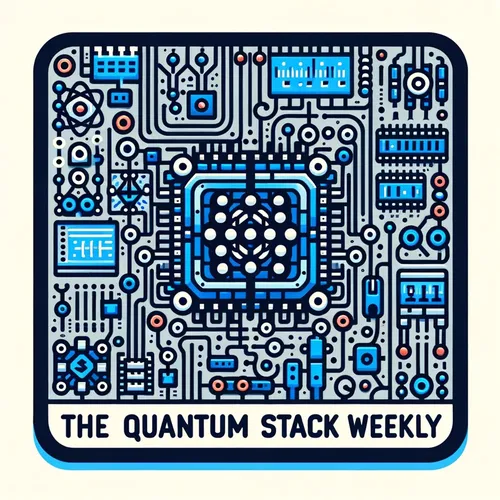Modular Quantum Leap: LEGOs, 99% Fidelity, and the Pulse of Progress
- Author
- Quiet. Please
- Published
- Wed 03 Sep 2025
- Episode Link
- https://www.spreaker.com/episode/modular-quantum-leap-legos-99-fidelity-and-the-pulse-of-progress--67618091
This is your The Quantum Stack Weekly podcast.
Every so often, the quantum universe delivers a jolt—a shimmering event that raises the hairs on the back of a physicist’s neck. Today, that pulse of progress happened in the sun-warmed labs of the University of Illinois. Imagine quantum processors—those fragile, cryogenic beasts—snapping together and pulling apart with the effortless precision of LEGO bricks. That’s not science fiction; it’s a fully realized modular quantum processor, just published in Nature Electronics, and it’s everything I love about this field: dramatic, elegant, and profoundly grounded in technical innovation.
I’m Leo, your Learning Enhanced Operator, quantum specialist and ceaseless observer of life’s entanglements. This week, I watched in awe as Wolfgang Pfaff and his team unveiled a superconducting quantum architecture made for modular assembly. The analogy is simple, even tactile: Instead of building a monolithic quantum computer—a machine where millions of qubits sit intertwined, errors rippling across a single, inflexible block—they’ve developed smaller, high-fidelity modules. Each module stands on its own, yet when snapped together, they become a programmable quantum network. The fidelity? Near 99 percent. For quantum logic, that’s as close to perfect as standing beside the event horizon—right at the limit before the world gets strange.
The dramatic leap is scalability. Until now, every incremental increase in qubit count created exponential engineering headaches—control lines tangled like ivy, noise seeping in like fog. But if you can assemble, reconfigure, and even swap defective modules—just as you’d rebuild a LEGO castle after a tumble—quantum computers become supremely adaptable. It’s the difference between one colossal cathedral and a city of swift, interlocking archways. And most crucially, modularity is our bridge to fault-tolerant, large-scale quantum systems.
You can feel the industry’s pulse quickening. Just days ago, Phasecraft, led by Toby Cubitt and Ashley Montanaro, raised $34 million to accelerate hardware-agnostic quantum algorithms for real-life problems: materials discovery, energy networks, logistics, and healthcare. Suddenly, the pieces are sliding into place. Quantum startups can focus on software while modular hardware evolves underneath, both progressing in parallel, like two photons too entangled to act alone.
Step into that chilled lab. Hear the hum of dilution refrigerators. Smell the ozone tang of supercooled circuits. See engineers, hands trembling with anticipation and cold, aligning modules with micron precision. This modular approach is a leap beyond the hype—a tangible, scalable platform that can withstand the chaos of the real world rather than living in theory’s shadow.
The implications ripple out: data centers readying hybrid clusters, state partnerships like New Mexico’s new DARPA-backed Quantum Frontier Project, and quantum in genomics with Quantinuum. Each is a signpost pointing to the same horizon—the era when quantum computing solves challenges far past today’s reach.
That’s the heart of this week’s story: modularity, precision, and a universe of possibilities neatly snapping into place, one innovation at a time.
Thanks for tuning in to The Quantum Stack Weekly. If you’ve got burning questions or want your favorite quantum riddle unraveled on air, just drop me a note at [email protected]. Subscribe for more revelations, and remember, this has been a Quiet Please Production. For everything quantum, visit quietplease.ai.
For more http://www.quietplease.ai
Get the best deals https://amzn.to/3ODvOta
